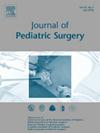Evaluation of Image-Defined Risk Factor (IDRF) Assessment in Patients With Intermediate-risk Neuroblastoma: A Report From the Children's Oncology Group Study ANBL0531
IF 2.5
2区 医学
Q1 PEDIATRICS
引用次数: 0
Abstract
Background
The International Neuroblastoma Risk Group (INRG) classifier utilizes a staging system based on pretreatment imaging criteria in which image-defined risk factors (IDRFs) are used to evaluate the extent of locoregional disease. Children's Oncology Group (COG) study ANBL0531 prospectively examined institutional determination of IDRF status and compared that to a standardized central review.
Methods
Between 9/2009-6/2011, patients with intermediate-risk neuroblastoma were enrolled on ANBL0531 and had IDRF assessment at treating institutions. Paired COG pediatric surgeons and radiologists performed blinded central review of diagnostic imaging for the presence or absence of IDRFs. Second blinded review was performed in cases of discordance. Comparison of local and central review was performed using the Kappa coefficient to determine concordance in IDRF assessment.
Results
211 patients enrolled in ANBL0531 underwent IDRF assessment; 3 patients were excluded due to poor image quality. Central reviewer pairs agreed on the presence or absence of any IDRF in 170/208 (81.7%; κ = 0.48) cases. Thirteen (6.3%) cases could not be adjudicated after second blinded review. Radiologists were more likely to identify IRDFs as present than surgeons (p < 0.001). Local and central reviewers agreed on the presence or absence of any IDRF in only108/208 (51.9%; κ = 0.06) cases.
Conclusions
Among experienced pediatric surgeons and radiologists participating in central review, concordance was moderate, with agreement in 81.7% of cases. On comparison of local and central assessment of IDRFs, concordance was poor. These data indicate that greater standardization, education, technology, and training are needed to improve the assessment of IDRFs in children with neuroblastoma.
Level of Evidence
Treatment Study, Level III.
中危神经母细胞瘤患者的图像定义危险因素 (IDRF) 评估:儿童肿瘤学组 ANBL0531 研究报告。
背景:国际神经母细胞瘤风险组(INRG)分类器采用基于预处理成像标准的分期系统,其中图像定义的风险因素(IDRF)用于评估局部疾病的程度。儿童肿瘤学组(COG)的 ANBL0531 研究对机构确定 IDRF 状态进行了前瞻性检查,并与标准化中央审查进行了比较:方法:2009 年 9 月至 2011 年 6 月期间,中危神经母细胞瘤患者加入 ANBL0531,并在治疗机构接受 IDRF 评估。COG儿科外科医生和放射科医生配对对诊断成像进行盲法集中审查,以确定是否存在IDRF。对不一致的病例进行第二次盲法复查。结果:211 名参加 ANBL0531 的患者接受了 IDRF 评估;3 名患者因图像质量不佳而被排除。在 170/208 例(81.7%;κ = 0.48)病例中,中心评审员对是否存在任何 IDRF 达成一致意见。13个病例(6.3%)在第二次盲审后无法判定。与外科医生相比,放射科医生更有可能识别出存在 IRDF(p 结论:在有经验的小儿外科医生和放射科医生中,放射科医生更有可能识别出存在 IRDF:在参与中央审查的经验丰富的小儿外科医生和放射科医生中,双方的意见基本一致,81.7%的病例意见一致。在对 IDRFs 的地方评估和中央评估进行比较时,一致性较差。这些数据表明,需要加强标准化、教育、技术和培训,以改善神经母细胞瘤患儿的IDRF评估:治疗研究,III 级。
本文章由计算机程序翻译,如有差异,请以英文原文为准。
求助全文
约1分钟内获得全文
求助全文
来源期刊
CiteScore
1.10
自引率
12.50%
发文量
569
审稿时长
38 days
期刊介绍:
The journal presents original contributions as well as a complete international abstracts section and other special departments to provide the most current source of information and references in pediatric surgery. The journal is based on the need to improve the surgical care of infants and children, not only through advances in physiology, pathology and surgical techniques, but also by attention to the unique emotional and physical needs of the young patient.

 求助内容:
求助内容: 应助结果提醒方式:
应助结果提醒方式:


